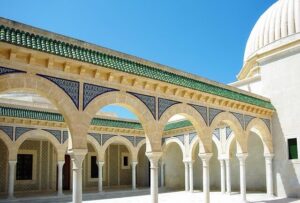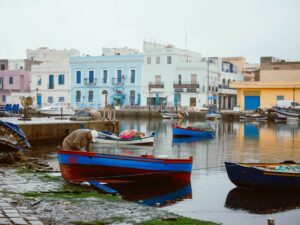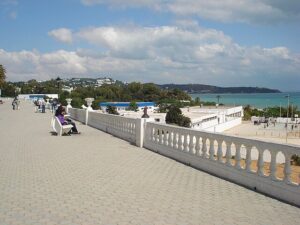Introduction to Climate and Ideal Time
Deciding when to go to Tunisia is the first step in planning an unforgettable trip. Tunisia, located in North Africa, offers unique experiences that vary by season. With a Mediterranean climate on the coast and a desert climate inland, it is possible to visit all year round.
For many travelers, the best time to go to Tunisia depends on personal preferences: relaxing on beaches, adventuring in the desert, or exploring cultural sites and archaeological wonders. This guide provides useful information to help you choose the optimal time to visit Tunisia.
Whether you are looking for summer sunshine or a cooler climate in spring, knowing what to expect will help you have the perfect experience.
Seasons and Climate in Tunisia
Tunisia experiences distinct seasons that differ between the coast and the inland regions. Understanding these variations will help you plan your trip better.
Spring (March-May)
Spring is considered one of the best seasons to visit Tunisia. Temperatures are mild, making it perfect for exploring destinations like Carthage or Kairouan. Additionally, the southern oases are lush during this period.
- Temperatures: 18-25°C
- Ideal for: cultural visits, trekking and excursions
- Precipitation: low
Summer (June-August)
Summer in Tunisia is hot, especially inland. However, Mediterranean beaches offer the perfect retreat from the heat. For those seeking a mix of culture and seaside relaxation, this is the ideal time.
- Temperatures: 28-35°C
- Ideal for: beaches and diving
- Precipitation: negligible
Autumn and Winter (September-February)
Autumn is the best time to visit Tunisia for those who prefer moderate temperatures. Winter, on the other hand, is perfect for desert excursions thanks to cooler temperatures.
- Temperatures: 20-27°C in autumn, 10-18°C in winter
- Ideal for: cultural visits, festivals, and Sahara excursions
- Precipitation: light in winter
The Best Time to Visit Tunisia
Deciding when to go to Tunisia depends on individual activities and preferences, but there are some general guidelines. For those who love the sea, the summer months between June and September are ideal. However, for visiting historical sites or exploring the desert, the spring and autumn months offer optimal weather conditions.
Here is an overview:
- May and June: Perfect for enjoying the spring weather while the beaches start to fill up.
- September and October: Ideal for a mix of beach and cultural activities.
- December-February: Perfect for desert adventures and cultural festivals.
For more information on weather forecasts, visit the international weather portal.
Recommended Activities by Season
Each season in Tunisia offers special activities that enhance every traveler’s experience. Choosing the best time to go to Tunisia will help you plan the type of trip you want.
Experiences:
Summer
- Boat excursions in the Kerkennah archipelago
- Relaxing on the beaches of Hammamet and Djerba
- Water sports such as snorkeling and windsurfing
Winter
- Tour of the ancient ruins of Carthage
- Exploring the Sahara Desert
- Attending winter festivals
Spring and Autumn
- Walks in the oases of Tozeur and Chebika
- Discovering UNESCO sites such as El Jem
- Visiting traditional markets in the medinas
Conclusion: When to Go to Tunisia
The best time to go to Tunisia depends on the type of trip you want to take. If you are looking for the sea, plan your stay between May and September. For cultural experiences, a trip in spring or autumn is recommended.
With a good balance between activities and relaxation, any time is great to discover when to go to Tunisia. Plan carefully to fully enjoy what the country has to offer.
We leave you with a short video on the topic.






